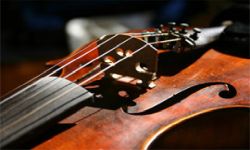PUBLIC DOMAIN RESOURCES
There are a variety of FREE ebooks you can download and the information is varied. Many ebooks and or content can be obtained from the Public Domain.
There are other writers who offer their information Free. Additionally, the United States Government Freedom for Information has made a great many free ebooks and no-cost material available to the public.
There are some ebooks provided that are Free from other Countries as well.

You can download many FREE EBOOKS, SOFTWARE, and RESOURCES from this site. https://www.gutenberg.org/
Wealth of Knowlege in Public Domain Works:

I am amazed at the wealth of knowledge available in the FREE EBOOKS. I would like to make this information and resources available to as many people as possible.
Information that is in the PUBLIC DOMAIN for FREE can be used to create your very own products. Of course, you must always verify any content or information as being free of copyrights prior to using it as your own. You can learn more about obtaining Public Domain Content at this site.
Be Creative in Your Searches:

Finding images tutorial
You have a great article. Now you want an image. How do you do that?
This Finding images tutorial offers a step-by-step guide to finding images that can be licensed as public domain or under the GNU Free Documentation License for Wikipedia. The most important thing while looking for images is to
Be creative with your search!
For demonstration purposes, this tutorial looks for images for the Stetson hat article. This article already has a photo, and the example is used only for demonstration purposes. All text in a blue box is related to this example.
Internet Archive is a non-profit library of millions of free books, movies, software, music, websites, and more:

Search the history of over 824 billion web pages on the Internet.
https://archive.org/details/librivoxaudio
"LibriVox - founded in 2005 - is a community of volunteers from all over
the world who record public domain texts: poetry, short stories, whole
books, even dramatic works, in many different languages."
How to download files:
Not All Files are downloadable.
https://help.archive.org/help/how-to-download-files/
Borrow Books From The Lending Library:
https://help.archive.org/help/borrowing-from-the-lending-library/
Quotes From Internet Archive:
"What is the loan duration for Internet Archive books?
Books are generally available for renewable 1-hour loans. Some books also offer a longer 14-day loan; for these books, if there are no copies available, users can join a waitlist. (There is currently no waitlist available for books that only offer 1-hour loans.)
Can I download an encrypted PDF or EPUB of the book?
When patrons check out a book for 1 hour, they can only use it through the online BookReader interface. When patrons check out a book for 14 days, they can either read the book through the online BookReader interface or download an encrypted file using a DRM-compliant book reader such as Adobe Digital Editions — the same technical protection software used by commercial publishers on their ebooks. Support will soon be added for Aldiko Next (mobile), Thorium (desktop), and other readers that support LCP DRM.
The book I want to read is only available for a 1 hour loan, but I can’t read the whole book in that time. Can I renew a book that I have borrowed for 1 hour?
Yes. If there are available copies, patrons can check the book out again.
How does borrowing a book work through archive.org or OpenLibrary.org?
These books are in BookReader, PDF and EPUB formats (and Daisy for the print disabled). (Note: some formats may not be available for some books.)
For 14 day loans, you can choose which format you prefer as you complete the borrowing process.
BookReader editions may be read online immediately in your web browser. No special software is required.
Books in the lending library (PDF and EPUB) are managed through digital rights management (DRM) book readers such as Adobe Digital Editions, which you may need to download to manage your library of borrowed books.
Is there a video tour for borrowing books through Open Library?"
"Open Source Text Books"
https://archive.org/details/opensource_textbooks
Know Copyright Laws:

Contents
- 1 Reality Check
- 2 Do I need to know the copyright and licensing status of the image?
- 3 Create your own
- 4 Check Wikipedia
- 5 Check public domain image sources
- 6 Check government sources
- 7 Ask for permission
- 8 Ask other Wikipedians
- 9 Yeah! I Got an image! What’s next?
- 10 See also
Reality Check
Think about what type of image you want. Does such an image exist? Is it possible to obtain such an image for Wikipedia? A good reality check is Google Image search. If the desired image is not there, then your chances of getting an image are slim. Also, be creative and vary the search terms. In most search engines you can combine multiple search terms with uppercase OR AND or NOT, and use *to represent any character(s).
The Stetson is known under a number of different names. A possible search would be for Stetson* OR ten-gallon OR cowboy Google search for Stetson and related
Do I need to know the copyright and licensing status of the image?
Yes!
Depending on the desired image, the copyright may be expired due to the age of the image. For the US, copyrights of images published before 1923 are expired. This also applies to many old paintings and photos. Such images can be safely used for Wikipedia even if there is a copyright notice on the page. There are also other ways around copyright, for example, fair use, but this is a legal minefield and should be avoided if possible. See also: Copyrights. Historic photographs are almost always grayscale, so you can speed up your search by using an advanced image search with the limitation to Return only images in grayscale.
A search for Stetson* OR ten-gallon OR cowboy returns many images. Limiting the search to grayscale, and say hello to Buffalo Bill. Buffalo Bill died in1917, so any photo of him was taken before 1923, and almost certainly has its copyrights expired.
Create your own e-books, software, art, music, photography, and more.
If you have access to the desired item and a digital camera, then you can easily take a photo yourself. As the copyright holder you then can release it under any license you want, for example, the GNU Free Documentation License. For abstract images, you may be able to create them yourself on the computer using a graphic program, for example, the image Image: HowToTieBowtie VersionA.png, or Image: Mad scientist caricature.png.
For a photo of a Stetson, you need:
A camera
A Stetson (your own, your friend’s, any Stetson will do)
10 minutes or less for taking the photo
If you are skilled, you can also draw your own image of a Stetson.
Check Wikipedia
Wikipedia is already a great source of photos.
Check the
Wikimedia commons , where images are sorted by category.
Check related articles on Wikipedia.
Check
What links
for articles that may contain images.Check foreign language links for the article and related articles, as they may have a photo already.
Search Wikipedia in the Image namespace and the Image talk namespace.
- or people on the
List of cowboys and cowgirls.. For example,
is wearing a nice hat. Check links for Stetson.
Foreign language links related to Stetson may be
DE: Cowboy ,
NL: Cowboy ,. The Italian,
also wears a nice hat.A search of Wikipedia for Stetson:
Stetson hat If you find an image here, you do not need to upload it. However, if it is non-free, you must still add a fair-use rationale to the image description file for your specific use of the image.
Check public domain image sources
Wikipedia: Public domain image resources list a large number of public domain image resources. Again, be creative. You can vary your search based on the articles you searched when checking Wikipedia. Don’t forget to check the copyright status. Ideally, it should explicitly say that the image is in the public domain or under the GNU General Public License. If there is no explicit statement it does not mean that it is copyright free.
Stetsons may, for example, be found in the section Wikipedia: Public domain image resources#History and the Library of Congress American Memory site for example has a nice photo of Buffalo Bill with a hat.
Works of the United States are often in the public domain. An easy way to find such images is to search with the restriction to site:.gov OR site:.mil. Again, be creative and vary your search terms. Not all images on the .gov or .mil sites are public domain, however. In case of doubt, ask. You’re on the safe side if you can find a public domain notice that says something along the line of:
In general, the information presented on this website, unless otherwise indicated, is considered in the public domain. It may be distributed or copied as permitted by law.
In the case of the Stetson, there would be quite a lot of results in the search for Stetson* OR ten-gallon OR cowboy site:.mil OR site:.gov. Of course, some are not related to hats. A nice example would be this photo. Checking the copyright status we look on the front page http://www.hood.army.mil/ and find a link at the bottom Security Notice that says: Information presented on this site is considered public information and may be distributed or copied. Use of appropriate byline/photo/image credits is requested. Now you’re all clear to use the photo.
Library of Congress
If you can’t find a public domain photo, then you may have to ask a copyright holder for permission. Select an image from your search with a copyright holder that may be willing to give you permission to use their image as public domain or under the GNU Free Documentation License. In general, copyright holders that earn money by charging reproduction fees for their images are unlikely to give them away for free. For example, news agencies have an excellent image database but will give you the rights only if you pay a hefty fee. (If you’re willing to spend the money, donate it to Wikipedia instead). Asking news agencies for free images is unlikely to succeed.
Private individuals that have pictures on their homepages or online photo albums are much more likely to grant permission if asked nicely. See if there is an email address associated with the photo, or if the webmaster’s e-mail address is available on the site. You also should check when the website was last updated. To do this, first, go to the website in question. Then, copy “javascript: alert(document.lastModified)”(no quotes) into your address bar and push enter. If the time that comes up is only a few seconds old, it is probably the time the server sent it to you. Otherwise, it is the time the author updated it.
A website not updated since 2001 is probably abandoned, and the copyright holder is no longer available under the given email address. Once you have narrowed it down to one or two images with copyright holders that are available and potentially willing to release the image under a suitable license, you may write them an email and ask nicely for permission to use the image. For sample requests see Wikipedia: Boilerplate request for permission. Your request should:
Introduce Wikipedia
Mention which image you want to use (with the link)
Mention where you want to use the image (with the link)
Ask for permission to release the image in the public domain or under the GNU Free Documentation License
Offer to credit the copyright holder/photographer on the image page
Offer to add a link to the copyright holder’s website on the image page
Thank the copyright holder for his time
If you receive permission, add the credits to the image page as promised, for example on Image:FremontTroll.jpg. Don’t forget to thank the photographer and provide him with links to the image page and the article(s) using the image!
Searching for Stetson* OR ten-gallon OR cowboy gives many good images. A possible target contributor would be the John Muir Exhibit, which was recently updated in 2004, and has a volunteer webmaster (with an email address), which may be inclined to volunteer a photo for Wikipedia.
You can list your request on Wikipedia: Requested pictures, to see if other Wikipedians have access to an image. Be aware that this may take some time, and some requests have been on this page for a very long time. Please follow the guidelines:
See if you can find an image on your own first
Avoid blanket requests, as, for example, “
need pictures for all people in the
Lists of people “.
Request images only for existing articles, i.e. if there is no article, then please write an article first before requesting.
Add the request if you could not find a picture. Select an appropriate subcategory or add a proper category or subcategory to the alphabetical list.
Link to the article for which you would like to have the picture added, and describe what kind of picture you need. Signing the request is nice.
Add only one picture request per bullet.
You can also use the images at Category: Wikipedia image placeholders as placeholders. Other Wikipedians may take this as a hint to look for such an image. But again, depending on the image, this may take some time.
For the Stetson, we could add the following line to Wikipedia: Requested_pictures in the section Clothing or hats:Stetson needs a nice image of a hat – [[User:JohnDoe]] 04:11, 14 Jul 2004 (UTC)
Yeah! I Got an image! What’s next?
Well, give it a good name, make sure it is the correct format and in the largest available size, upload it, add the correct image tags, including source and description, and add it to the desired article(s). If possible upload it at Wikimedia Commons, so the image is available also for other Wikimedia projects. (See Commons: First steps for details)Wikipedia Image policy for a good title, Size, etc.wikipedia: Image description page for what to add to the description page Wikipedia: Image copyright tags for the correct copyright tags Wikipedia: Picture tutorial and Wikipedia: Image markup for how to add the image to articles
Selecting the Stetson image from Fort Hood and downloading it.
Converting the image from GIF to JPEG.
Renaming the image to “Image:StetsonHatFortHoodArmy.jpg” uploading it as Image:StetsonHatFortHoodArmy.jpg
Free images can also be uploaded to the Commons so that they are available for all Wikipedia projects. See Commons: First steps for details.
Techniques and Tricks for Writing:

Even if….. you may not know how to write using a word processor, but you can still easily learn the techniques and tricks for writing, creating, and promoting your very own ebook products…
You should take steps to begin embarking upon one of your greatest desire to publish your works.
Find out more details:
From wikibooks.org:
“There are many resources available on the net that are in the public domain, and therefore freely usable without restrictions for Wikimedia universe (this includes Wikibooks) content.
There are also many copyrighted resources whose licensing terms are liberal enough that they can generally be used as well. For these, see free or semi-free non-Public-Domain information resources and GNU Free Documentation license resources (including images).
For public domain images, see public domain image resources.
CAVEAT: Because there is no concept of https://en.wikipedia.org/wiki/public_domain in Japan’s copyright law, even though the materials are claimed public domain, there can be some restrictions such as about commercial use, which has a conflict. Also, unlike the United States, most English-speaking commonwealth countries exert Crown copyright. Please make certain that in any particular jurisdiction government agencies will allow you to copy materials without permission.
Indian government sites also seem to be copyrighted by default. Quoting from: Unless otherwise stated, copyright and all intellectual property rights in all material presented on the site (including but not limited to text, audio, video or graphical images), trademarks and logos appearing on this site are the property of the Government of Maharashtra and are protected under applicable Indian laws. Any infringement shall be vigorously defended and pursued to the fullest extent permitted by law.”